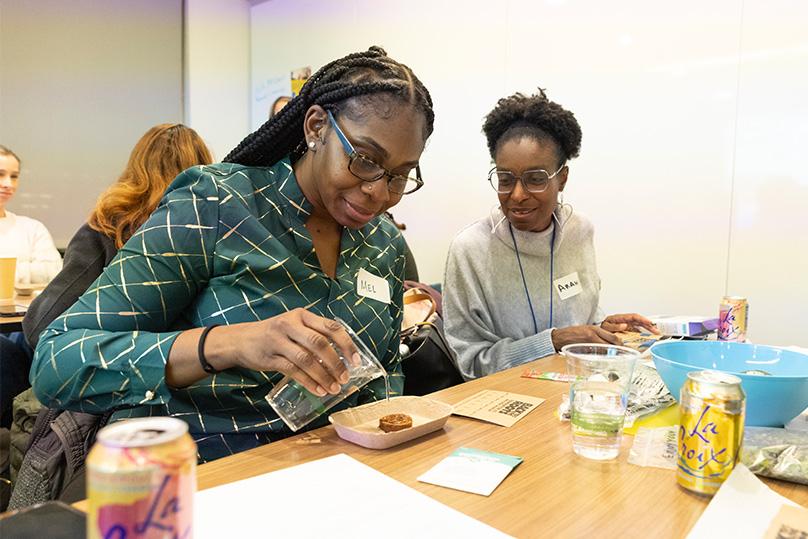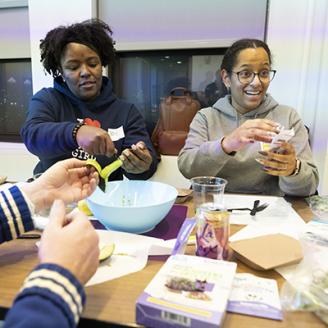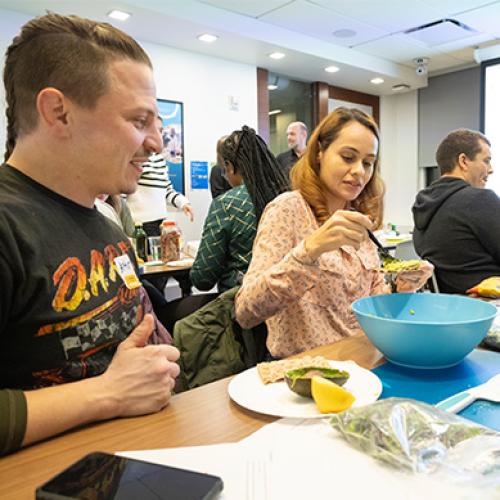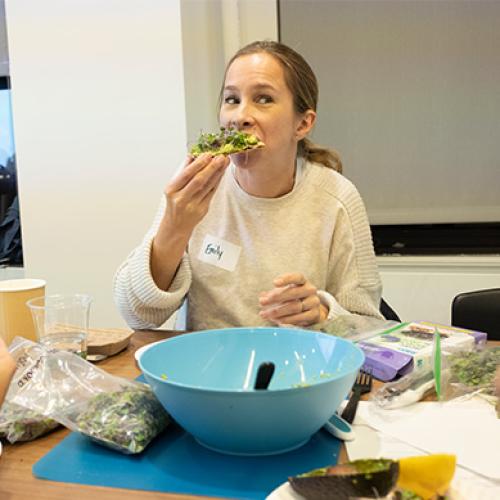
Growing plants in places like New York City is unique because it often requires non-traditional methods - community gardens, rooftop farms, vertical production.
One technique is hydroponics, a type of horticulture involving the growing of plants using a water-based nutrient solution rather than traditional soil. And it’s not just for small farmers and businesses with an eye toward sustainability anymore. Teachers are finding hydroponic systems and accompanying curricula can serve as fantastic tools for STEM education.

MƒA teachers were introduced to this idea during a three session MƒA mini-course, “Supersonic Hydroponics: How to Bring Gardening to Your Science Classroom,” discovering the most engaging and relevant ways to bring outdoor education and science inquiry into their classrooms.
Co-leading the course in the fall of 2023, MƒA Master Teachers Melissa Redden and Rebecca Webb introduced a variety of hydroponics systems and approaches to their fellow teachers, explained how they worked, and compared them with traditional gardens. This included the Kratky Method, Vince Crop Systems, and the indoor state-of-art hydroponic farm at their school, Scholars’ Academy in Queens.
“Hydroponic farming is the way of the future. It solves issues of space, water scarcity, and access to food,” said Melissa. “It’s versatile and simple in its methodology and I love how it can be incorporated into any curriculum to enrich the learning of our students.”
More on hydroponics and MƒA
In 2017, MƒA Master Teacher Vielca Anglin used an MƒA Impact Grant to spend her summer doing biological and environmental research in the Amazon, an experience that inspired her to teach her students the science behind sustainability.
This soon led to City-As-School in Manhattan acquiring a hydroponic garden that creates produce for school lunch in-house, monitored by the students themselves.
MƒA teachers learned about hydroponic-centered lesson plans and brainstormed ideas for classroom implementation. Melissa suggested making graph task cards and viewing plant cells under microscopes. Rebecca proposed setting up a controlled experiment using the scientific method, having students test variables on plant growth using hydroponic and soil jar systems.
Course participants then grew hydroponic microgreens they eventually used in their own recipes for avocado toast. “After all, preparing and eating the homegrown food is a major component of this work,” added Rebecca.
They also discussed grant-writing basics and found out about partner organizations, including Teens for Food Justice, a youth-led movement to end hunger and food insecurity, who graciously donated supplies used throughout the course and previously installed the hydroponic farm at Scholars’ Academy.
Melissa believes teachers left the final session feeling inspired and ready, “with a complete Amazon shopping list they can use to continue the work, no matter what their classroom looks like.”

Teachers learned that some microgreens are best grown hydroponically. They were soon able to add them to their own avocado toast recipes.

"Preparing and eating the homegrown food is a major component of this work," said Rebecca. Most MƒA teachers agreed.